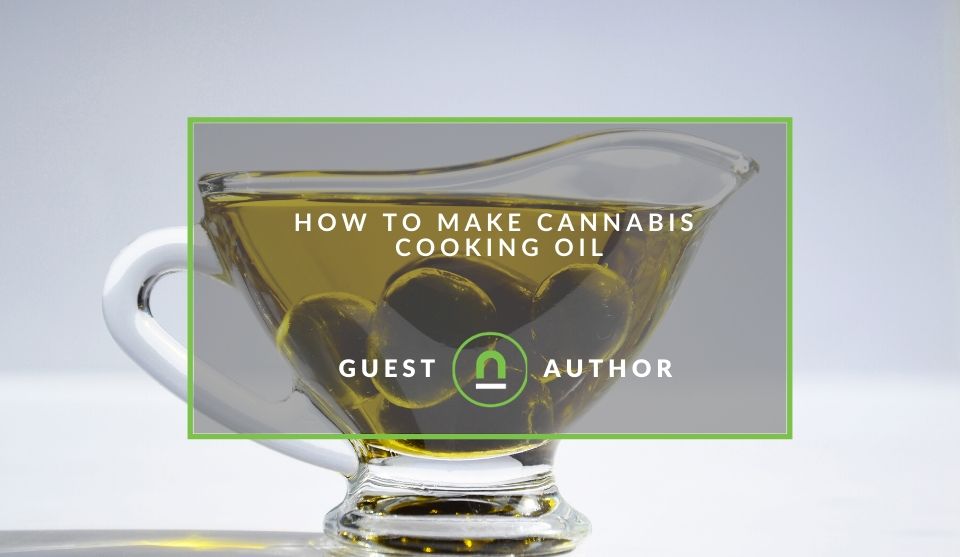Recent posts

nichemarket Advice
The South African VAT Threshold Chokehold
05 December 2025

Doctors Orders
The Difference Between SOAP Notes and DAP Notes
02 December 2025

Petrol heads
Why Load Bin Accessories Make Your Bakkie So Much Easier to Live With
26 November 2025

Alarming
What Is The Part Time Job WhatsApp Scam?
25 November 2025
Popular posts
Extravaganza
Trending Music Hashtags To Get Your Posts Noticed
24 August 2018
Geek Chic
How To Fix iPhone/iPad Only Charging In Certain Positions
05 July 2020
Extravaganza
Trending Wedding Hashtags To Get Your Posts Noticed
18 September 2018
Money Talks
How To Find Coupons & Vouchers Online In South Africa
28 March 2019
How to Make Cannabis Cooking Oil
21 May 2020 | 0 comments | Posted by Elma Mrkonjic in Masterchefs
Cannabis cooking oil, also known as canna-oil, is a popular ingredient in cooking. Edible cannabis products аre sold in all states where marijuana is fully legalised and countries around the world such as Canada, Holland and South Africa. One of these products is canna-oil.
According to estimates, the cannabis edibles market will reach $4.1 billion by 2022. This number tells you how popular these ingredients are. However, being a part of the community and using cannabis products doesn’t mean you have to buy them from stores.
A lot of people enjoy cooking with cannabis products. One of the main ingredients in almost every dish is cooking oil. Canna-oil is an excellent replacement for standard cooking oils.
In this article, we’ll show you how to make your canna-oil and enjoy the perfect dish served with the scent of cannabis. Let’s take a look.
Ingredients you’ll need
Sunflower oil, for example, is made by pressing the seeds, which is impossible to do with cannabis. Still, the THC coming from the plant is fat-soluble, making it perfect for combining with other oils.
What you need to do is choose an oil coming from other sources, like olives, coconuts, or others. Then, you need to infuse them with cannabis.
You’ll need to do a little more than combining the two ingredients. Still, everything you need is ground cannabis and cooking oil of your choice.
Cannabis decarboxylation
The first thing you need to do is to decarboxylate cannabis. It may sound like an experiment only suitable for lab conditions, but it’s a simple procedure. Since most dispensaries don’t sell ground cannabis, you’ll need a grinder.
Take one cup of cannabis and grind it, but make sure that it’s not too fine because everything that can go through the sifter will end up in your oil. After that, all you need to do is preheat the oven to 225℉, place a sheet of parchment paper in a baking pan, spread cannabis over it, and put the baking pan in the oven. Leave it like that for some 40 minutes, and voila—you’ve become a master chemist who has successfully decarboxylated cannabis.
This process is vital because you get to convert THCA from the raw plant into THC. In other words, if you want to feel the psychoactive effects of THC, you need to decarboxylate cannabis.
If you want the oil to be more powerful, you should use a stronger marijuana strain. According to medical marijuana statistics, the THC levels in cannabis can range from 0.3% for medical purposes to 30% in Indica strains.
In other words, if you want it to be more potent, you should use Indica, but if you’re going to spice things up, you can go with the Ruderalis strain that has around 2.5% THC. Cannabis ruderalis is mainly used for medical purposes because it contains a high level of CBD.
How to make your canna-oil?
First thing first, choose the type of oil that you’re planning to infuse. The final taste of your canna-oil will depend on this choice. If you use coconut oil, you can expect the oil to have a coconut flavour. Cooking with it will make no difference than cooking with regular oil, but your dish will have a touch of cannabis.
Let’s say you’ve chosen to use coconut oil. Mix one cup of ground cannabis with one cup of coconut oil. Please put it in a slow cooker and let it simmer for up to 12 hours. In most cases, 6–8 hours will be just fine. If it looks like it needs more time, just let it cook more. Stir at least every half an hour to prevent burning and to make sure the ingredients are well combined.
When you’re done cooking, just let it cool down. Place a piece of cheesecloth over a bowl or use a strainer. Pour the oil through the cheesecloth or the strainer, and the liquid going inside the container is your canna-oil.
If you’re using a cheesecloth, some people will tell you to squeeze the oil from it. Others will tell you not to do it as this will add chlorophyll to your canna-oil. The decision is yours, as the chlorophyll is not harmful.
Pour the oil into a jar, bottle, or anything that you find suitable. Then, it’s best to put it in the fridge. Use it when you need it.
If you put it in the fridge, it will last longer, but if you plan on keeping it on a shelf, make sure you use it within two months.
What can you cook with it?
Treat it just like regular cooking oil. It has the same features, and it can be used for the recipes you like. Whether it’s a delicious meat dish, a salad, your favourite vegetables, or anything else that needs a drop of oil—canna-oil can be your number one choice.
Conclusion
Even though making cannabis cooking oil takes hours, it’s still a simple procedure. Also, it doesn’t require any special equipment. The heat and the slow cooker do most of the job, and occasional stir will prevent it from burning.
Everyone who enjoys cannabis-infused edibles should consider doing something like this. Canna-oil is a great way to prepare a delicious meal for yourself, your spouse, or friends. Whatever the occasion, enjoyment is twofold—delicious food and the cannabis effect.
Tell us your story
Would you like to write for nichemarket just like Elma has? Find out how to submit a guest post and when you're ready, you can contact us.
Are you looking to promote your business?
South African natural medicine businesses can create your free business listing on nichemarket. The more information you provide about your business, the easier it will be for your customers to find you online.
Registering with nichemarket is easy; all you will need to do is head over to our sign up form and follow the instructions. If you require a more detailed guide on how to create your profile or your listing, then we highly recommend you check out the following articles.
Recommended reading
If you enjoyed this post and have time to spare why not check out these related posts and dive deeper down the rabbit hole that is the cannabis treatment.
- How To Earn Cryptocurrency With Cannabis-Related Content
- Trending Hashtags For Cannabis Enthusiasts
- Popular Hashtags For Natural and Alternative Medicine
- 10 Benefits of Hemp Seed Oil for Great Health
- CBD for Anxiety - What Should I Know?
- Can You Make Your Own CBD Oil?
Tags: Cannabis , Guest Post
You might also like
The South African VAT Threshold Chokehold
05 December 2025
Posted by Che Kohler in nichemarket Advice
How South Africa's R1 Million Limit Keeps Small Businesses From Developing, And Why Even Adjusting For Inflation Alone Would Free Up Burdens On Small...
Read moreWhat Is The Part Time Job WhatsApp Scam?
25 November 2025
Posted by Che Kohler in Alarming
A deep dive into the scheme behind all these random WhatsApp invites or Telegram chats offering you part-time remote work that pays you out instantly...
Read more{{comment.sUserName}}
{{comment.iDayLastEdit}} day ago
{{comment.iDayLastEdit}} days ago
 {{blogcategory.sCategoryName}}
{{blogcategory.sCategoryName}}
